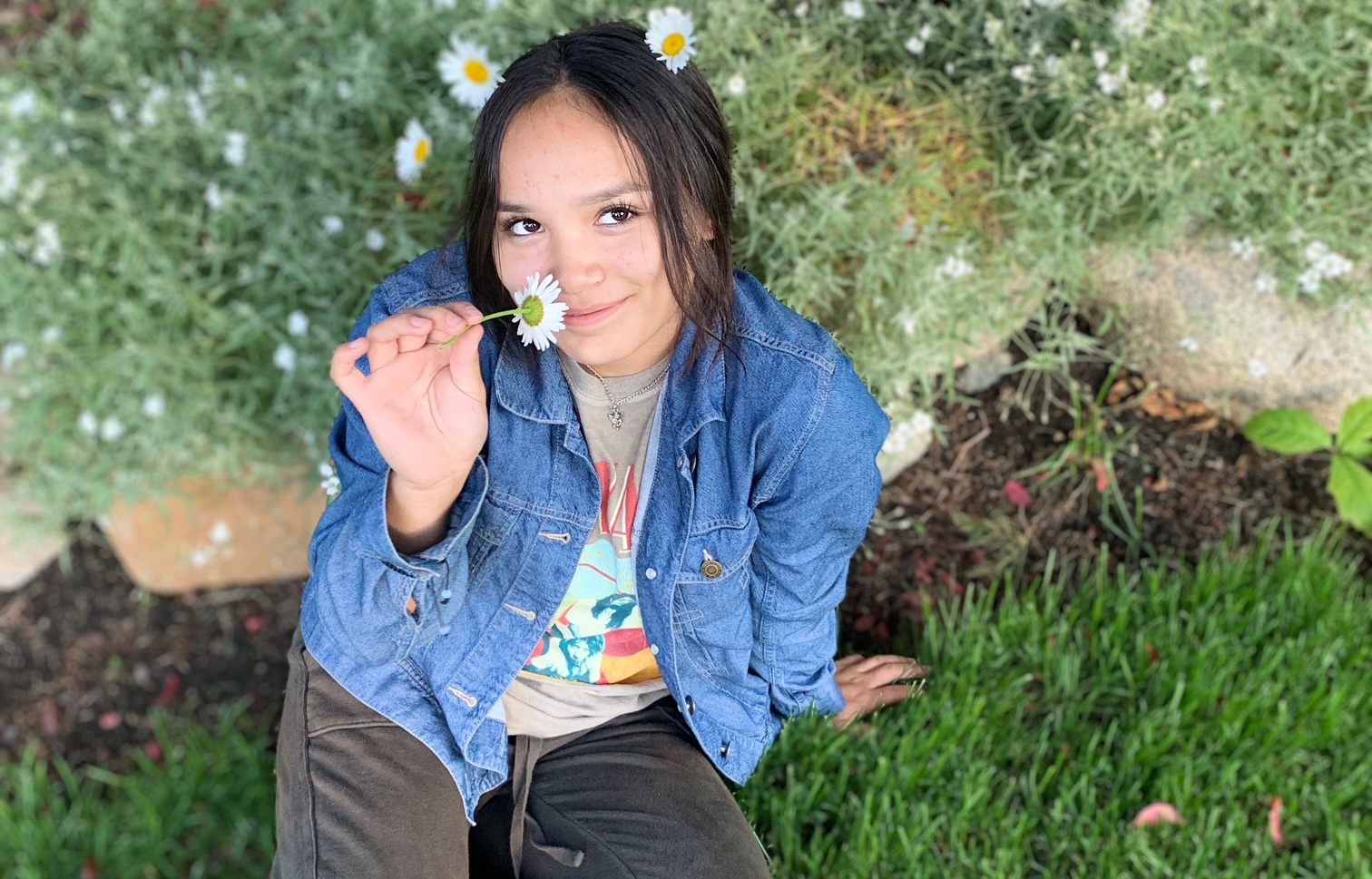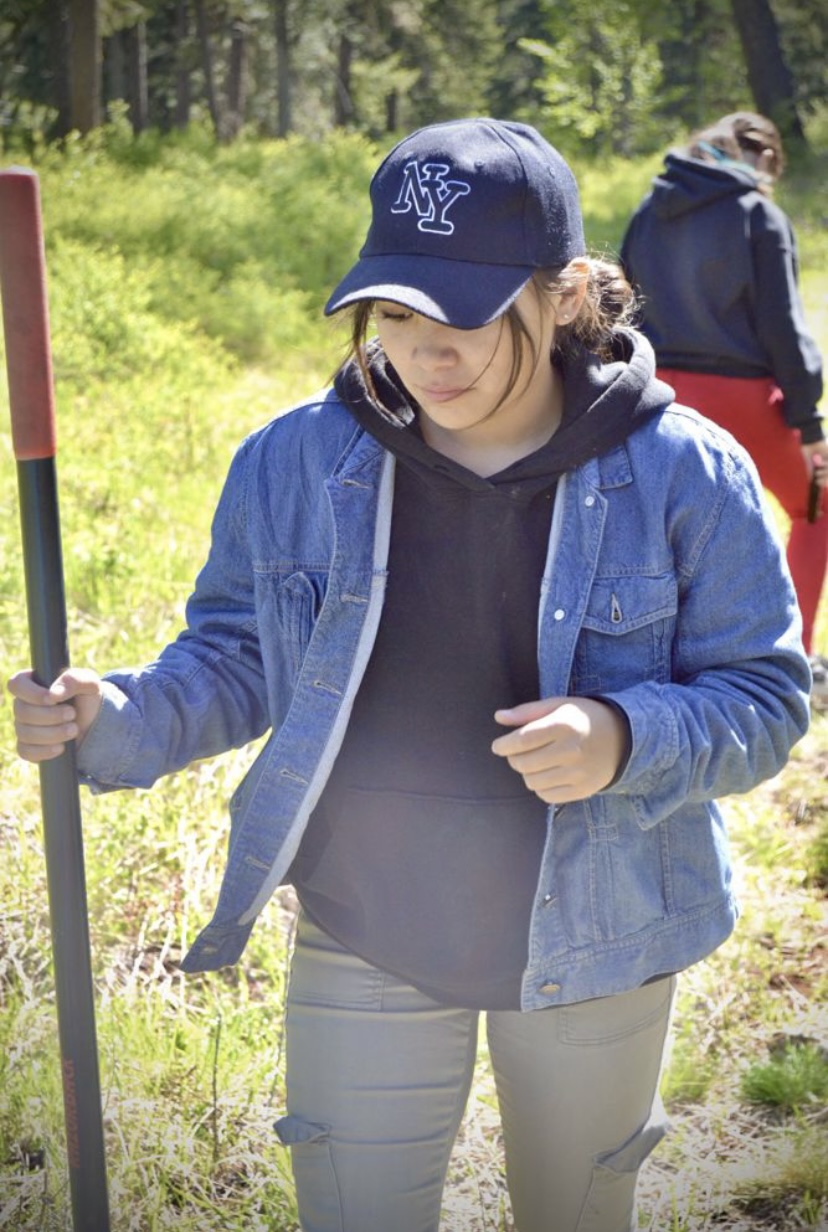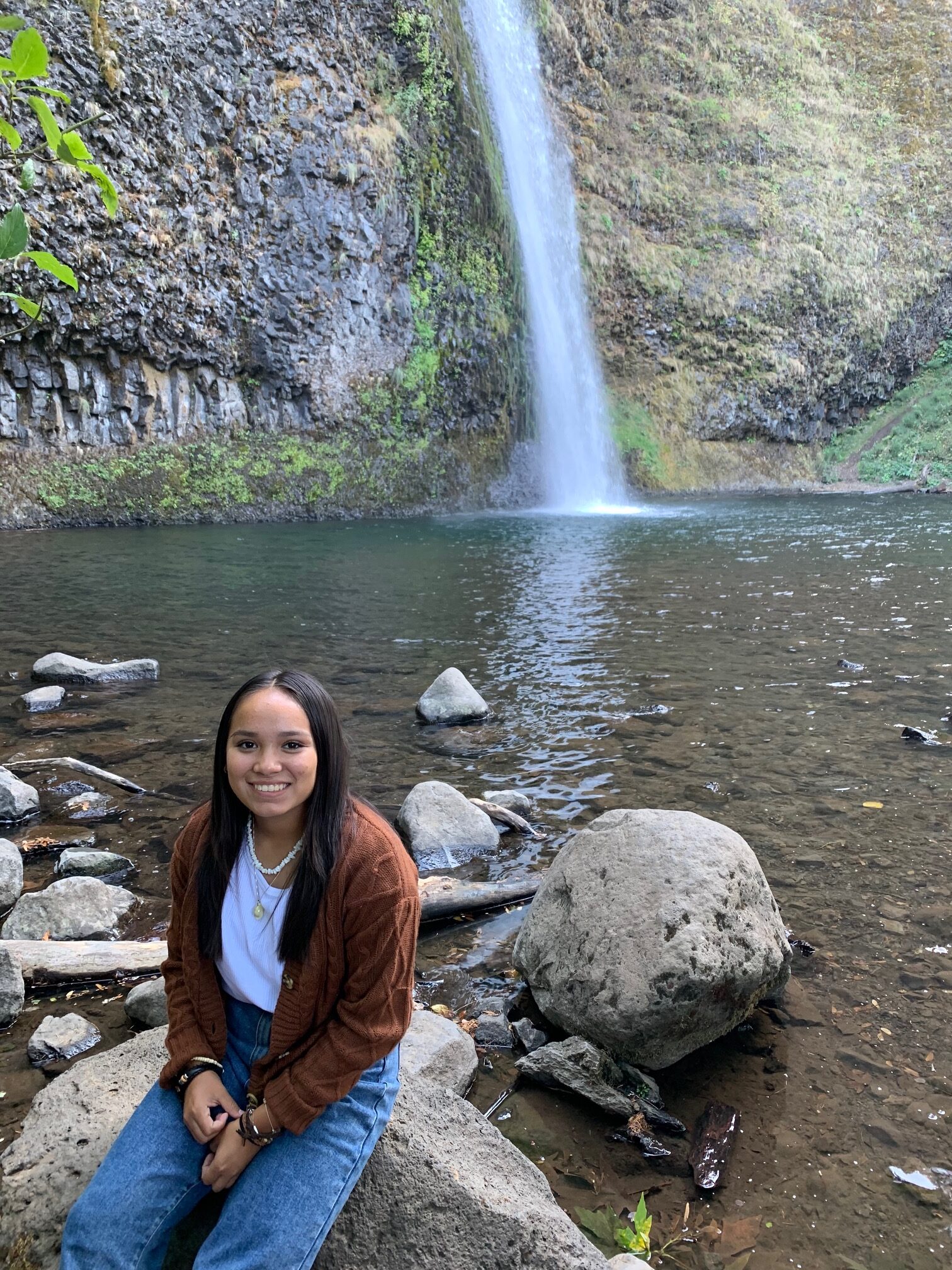
For sixteen-year-old Alizea Daniels, a member of the Coeur d’Alene and Confederated Salish and Kootenai Tribes, switching from a tiny middle school to a larger one four years ago was a big shock. “There were only about 15 kids in my whole grade. So I went from that to 200 or 300 kids in my grade,” she said.
The new school was much more rigorous, she said. She’d always been good at English and writing, but there were some gaps in her math knowledge. “I was behind quite a bit when it came to education, and I had to find ways to really push myself and try to meet the level that everyone else was at,” Alizea said. “And I think that a few of my teachers in middle school didn’t really understand.”
Most of her new classmates had gone to school together since elementary, and Alizea felt like her teachers expected her to know things she had never been taught. The transition to a new school was even more challenging. “When I made that move, it was even more difficult because I didn’t get the help that I wanted. I was just pushed away with ‘you should have learned this already,’” she said.
Alizea wasn’t failing, but she struggled with assignments. She knew she needed strategies to learn the class material she was missing. “I would have appreciated it if [my teachers] would have taken time and just really tried to help me with what I wasn’t quite grasping and understood where I was coming from with being a new student,” she explained. What she hoped for, said Alizea, was the kind of tutoring given to students who were doing well in class, but who could benefit from extra help.
Voices: Alizea Daniels
They really wanted to do anything they could do to show me different careers that I could pursue.
It took a parent-teacher conference before Alizea, with the help of her mom, was able to advocate for herself and explain why she was behind in some subjects. After that, a few of her teachers pulled her aside in class to make sure she was understanding the subject material. “It did take a little bit of communication to get a little bit more one-on-one time,” she said.
Alizea also would have liked her middle school teachers to acknowledge her strengths, rather than just focus on what she didn’t know or couldn’t do. “I could have been challenged a little bit more if they were to find things that I was good at and then kind of expanding on that,” she said. “[It]would be really helpful if teachers were able to see where everyone’s at, rather than just where they expect them to be.”
Alizea says her eighth grade experience discouraged her from asking questions and made her feel like she wasn’t smart. But eventually, once she recalled how she had previously been a good student, it motivated her. “I was never considered to be behind until I moved,” she said. “But it kind of also encouraged me to learn more so I could be [at] the same standards.”
It was her eighth grade English teacher at the new middle school who helped reinvigorate her love of learning. “She really recognized how hard I was working and she recognized how well I was doing in the class,” Alizea said.
That teacher encouraged her to take honors classes when she got to high school. As a result, Alizea decided to take math during summer school to catch up. “It pushed me to go and seek different opportunities so I could learn everything that I needed to learn [to] be ready for high school and higher level classes,” she said. “That was kind of the turnaround for me.”
Now 16, Alizea is thriving as a junior at Post Falls High School, located in a town of around 40,000 in northern Idaho. She’s a student athlete, playing basketball and soccer and running track. Alizea’s taking honors classes, and is looking forward to college with the goal of majoring in physical therapy.
Two of Alizea’s most meaningful educational experiences have been her medical careers and sports medicine classes. After she shared her career goal of becoming a sports physical therapist with her teachers, they connected her with professionals working in the field. “They brought in guest speakers [who] told me about their experiences while working in physical therapy and their experiences going to college,” she said.
Those teachers encouraged her interest in physical therapy, Alizea said. They “were really, really excited that I was passionate about physical therapy, and they really wanted to do anything they could do to show me different careers that I could pursue.”
As a member of the Coeur d’Alene and Confederated Salish and Kootenai Tribes, Alizea has always learned about the history and culture of her people from her family and community. As a young girl, she lived on a reservation, “where everything was influenced by the tribe.” Programs revolved around the tribe’s history and culture, and there were also language classes — something she missed at her predominantly white middle and high schools. “For our tribe, our language is kind of fading. So it was really important to carry that tradition of our language on to the next generation,” she said.
At school, she’s had teachers who relied excessively on textbooks as well as creative teachers who encouraged students to think critically about their learning.
In her new middle school, many of the history lessons she had were based on stereotypes of Native peoples and the perspective of white colonialists, Alizea says. Her teacher frequently screened documentaries that depicted Native Americans in a negative light — “[portrayals of] these people who were crazy [and] who tried to come and kill the settlers,” she said.
The teacher did not reprimand her classmates who made negative comments about Native Americans after watching the videos. As the only student of color in that class, Alizea felt extremely uncomfortable and alone.
“A lot of the time it was like they didn’t really notice that I was there,” Alizea said of her middle school classmates. “They might have just assumed that it’s okay to say these things out loud because ‘nobody’s gonna stop me.’… It was kind of in a setting where it was okay to say hurtful things.”
Alizea said she tried to share examples of the positive contributions of Native Americans in the hope of creating a conversation with her peers. “It was also important for me to kind of see the different points of view that people have and different ways that people think about that … history,” she said.
She appreciates that approach in her high school history classes, where her teachers have focused on presenting multiple points of view. “It’s not one-sided history,” she said.
Not only have her high school history teachers used primary sources from both colonial and Native American communities, but they have also focused lessons on Native people’s culture and traditions. “They really went into detail about what their life was really like. They talked about the Native Americans’ experiences,” Alizea said.
While her high school experience has been much better than middle school, Alizea still sometimes feels isolated as a student of color at a high school that is 88 percent white. She said that her high school will often display posters with generic messages about equality and has clubs that celebrate cultures from other countries, but she wants a space where she can connect with other students of color.
“I would really appreciate it if [the school]were to have a club for students of color, especially considering there’s not a lot that go to my school,” Alizea said. “That’d be a nice way for us all to share our experiences and come together and realize that there are other people who attend the school that are just like you, or that face similar struggles as you do.”
Alizea said she learns the most when she has opportunities to not only work with her peers but also learn from them. Her current history teacher often assigns groups to explore different sides in historical conflicts, and students then talk through different perspectives. They learn how to defend their own viewpoints, explain why they think what they do, and sometimes even change their minds.
“He likes us to choose one side or the other, and then find evidence to back it up,” she said. “And then we would go and speak to the opposing side. And we would kind of debate over what side we think was in the right, or what side was in the wrong, so I felt like that’s really been awesome.”
Alizea said these experiences — being allowed to learn from other students about why they decided to agree with certain things — have been the highlight of her education this year. “For me personally, it helped me remember a lot of the things that I was taught. Not only that, but [also] feel included in the conversation.”


